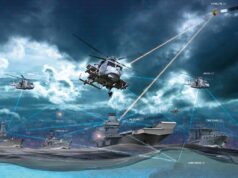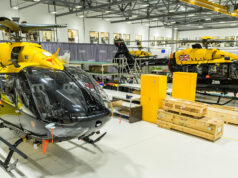The capability, known as Gladiator, was announced by the Minister for Defence Procurement in May 2019.
Since then, work has ramped up on the programme and the military are looking at how it could meet the synthetic training needs of various platforms. According to a news release:
“For example, Typhoon is aiming for a 50/50 blend of synthetic and live flying, and F-35 Lightning II is aiming to complete a large percentage of collective training using Gladiator. Gladiator is provided by Boeing Defence UK (BDUK) and operated on an MOD network. The system allows multiple aircrew to experience the same battlefield environment and threats simultaneously.
It will enable pilots to exercise capabilities, tactics and procedures that would be impossible in the live environment due to airspace, aircraft availability, or security constraints. Through incremental acquisition, Gladiator will evolve allowing the UK to undertake synthetic training for air, land and maritime forces, all on a secure network and safe in the knowledge that the training cannot be observed by adversaries.”
Stuart Lafferty, Flight Simulation and Synthetic Trainers (FsAST) team leader, said:
“With Gladiator we can fly a large number of aircraft together at any one time, which in real-life training would be almost impossible and not cost effective. Gladiator is about allowing pilots to do things they couldn’t normally practice in the real world. In addition, pilots won’t be aging aircraft, burning jet fuel or firing expensive weapons – these are important environmental and financial benefits to the MoD.”













I hear Russel Crowe has shares in this. 🙂
Computer gaming with serious realism..!
I kinda want one!